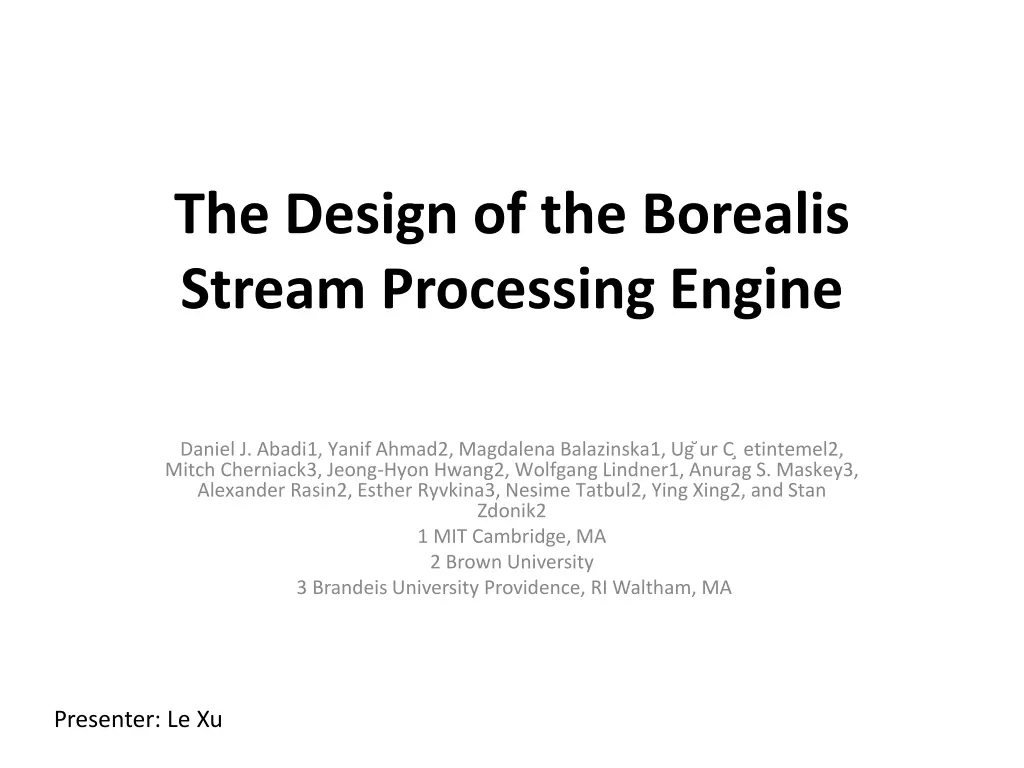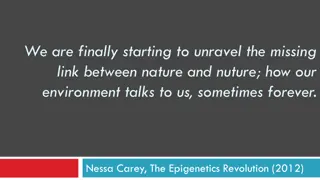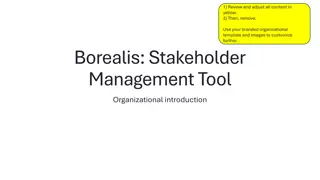
Borealis Stream Processing Engine: Next-Gen Architecture & Dynamic Capabilities
Dive into the innovative design of the Borealis Stream Processing Engine, featuring dynamic query modification, system architecture insights, and advanced query processors. Explore its evolution from Aurora, dynamic revision capabilities, and node architecture details for comprehensive understanding.
Download Presentation

Please find below an Image/Link to download the presentation.
The content on the website is provided AS IS for your information and personal use only. It may not be sold, licensed, or shared on other websites without obtaining consent from the author. If you encounter any issues during the download, it is possible that the publisher has removed the file from their server.
You are allowed to download the files provided on this website for personal or commercial use, subject to the condition that they are used lawfully. All files are the property of their respective owners.
The content on the website is provided AS IS for your information and personal use only. It may not be sold, licensed, or shared on other websites without obtaining consent from the author.
E N D
Presentation Transcript
The Design of the Borealis Stream Processing Engine Daniel J. Abadi1, Yanif Ahmad2, Magdalena Balazinska1, Ug ur C etintemel2, Mitch Cherniack3, Jeong-Hyon Hwang2, Wolfgang Lindner1, Anurag S. Maskey3, Alexander Rasin2, Esther Ryvkina3, Nesime Tatbul2, Ying Xing2, and Stan Zdonik2 1 MIT Cambridge, MA 2 Brown University 3 Brandeis University Providence, RI Waltham, MA Presenter: Le Xu
Second Generation Stream Engine Developed from Aurora (first generation of stream processing engine) sharing input format and similar system architecture New feature: Dynamic modification of operator Query revision
Aurora Processing Network Source: The Aurora and Borealis Stream Processing Engines: http://homes.cs.washington.edu/~magda/borealis-book.pdf
A Borealis Query Processor Data interface: - Stream Data Input Control interface - Control messages Box Processor - Main operation (Aggregate, Filter, Join, read, write, etc.)
A Borealis Query Processor Local Optimizer Load Shedder Priority Scheduler
Take a loser look at the Borealis node architecture
Borealis, after Aurora Dynamic Revision of Query Results - diagram history replay - stateless and stateful operation replay - challenges: Cost & Storage; proliferation Query Modification (dynamic!) - control line Dynamic System Optimization
Dynamic revising query results - Motivation: wrong/missing input, shed load - Each box (operator) has a diagram history stored in the connection point of the input (has a history bound, of course) - Start revise while a revision message received (add, delete, replace) - Dynamic revision only generates the delta reflecting the change of result to save space
Stateless revision Replace: 4 Delete: 6 x>5 1 6 8 6 8 Stateless operator (e.g. Filter) only affects the revised message itself Dynamic revision only generates message of operation to revise the old result
Stateful revision REVISED Aggregation M, T, W T, W, R W,R,F Stateful operator(e.g. Aggregation by window) revision require all messages involve in computation Dynamic revision only generates message of operation to revise the old result
Dynamic Revision Challenge Revision Proliferation (misalignment in size- based operation) Before: After insert: 3 2 1 1 3 2 All messages (start from revision point to present) need to be revised! - Revision message need to be ignored sometimes.
Dynamic Modification of Queries Control Lines Triggered while receiving control message specifying <attribute, value> pair Timing: - Control message before data - Control message after data
Time Travel Connection Point (CP) View box 1 CP box 2 CP view has two operations to enable time travel: - replay - undo
Borealis Optimization 1. Initial Diagram Distribution - Read/Write close to database site - Run correlation algorithm to find best operator/node match 2. Dynamic Optimization - Local Optimization load shedding/query delay, scheduling - Neighborhood Optimization Edge box sliding (limited bandwidth), correlation maximization, upstream load shedding
Edge box slide After slide Before slide (left node overload) Node 1 Node 2 Node 1 Node 2 1 2 3 1 2 3 Example of downstream slide: while network bandwidth is limited, this benefits the neighborhood while box 2 produce more output than input. And vice versa for upstream slide (e.g. box 2: join)
Neighborhood load shedding Source: Presentation: The Design of the Borealis stream Processing Engine http://www.seas.upenn.edu/~mengmeng/presentations/Borealis.pdf
Neighborhood load shedding (less total loss) Source: Presentation: The Design of the Borealis stream Processing Engine http://www.seas.upenn.edu/~mengmeng/presentations/Borealis.pdf
Discussion and Open questions Progress on time travel and dynamic modification of query Possible high latency in the set up stage that reduce the flexibility of the system Revision-heavy application stall the processing Centralized global optimization Is it possible that the sharing load between the nodes never stops?
Dynamic Load Distribution in the Borealis Stream Processor * Ying Xing Brown University yx@cs.brown.edu Stan Zdonik Brown University sbz@cs.brown.edu Jeong-Hyon Hwang Brown University jhhwang@cs.brown.edu
More on Load Balancing Pairwise Load Balancing Define score of Operator o while node 1 offload to node 2 S(o)=r(o,N1)-r(o,N2) 2 r(o,N) Denotes the correlation coefficient between load of operator o and the load of all other operators in the node N.
Global Load Balancing 1. Settle non-removable node 2. (initial distribution)Greedy algorithm assigning the node with lowest node with operator with largest score of the node 3. Dynamic pairwise load balancing Score: S(o,Ni)=1 nj=1 1 r(o,Nj)-r(o,Ni)
Experiment Latency Ratio: end-to-end latency/end-to-end processing delay






